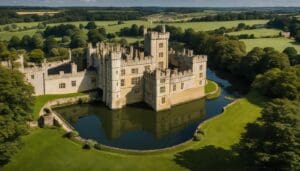Your Full Guide for a Wonderful Trip in Uruguay
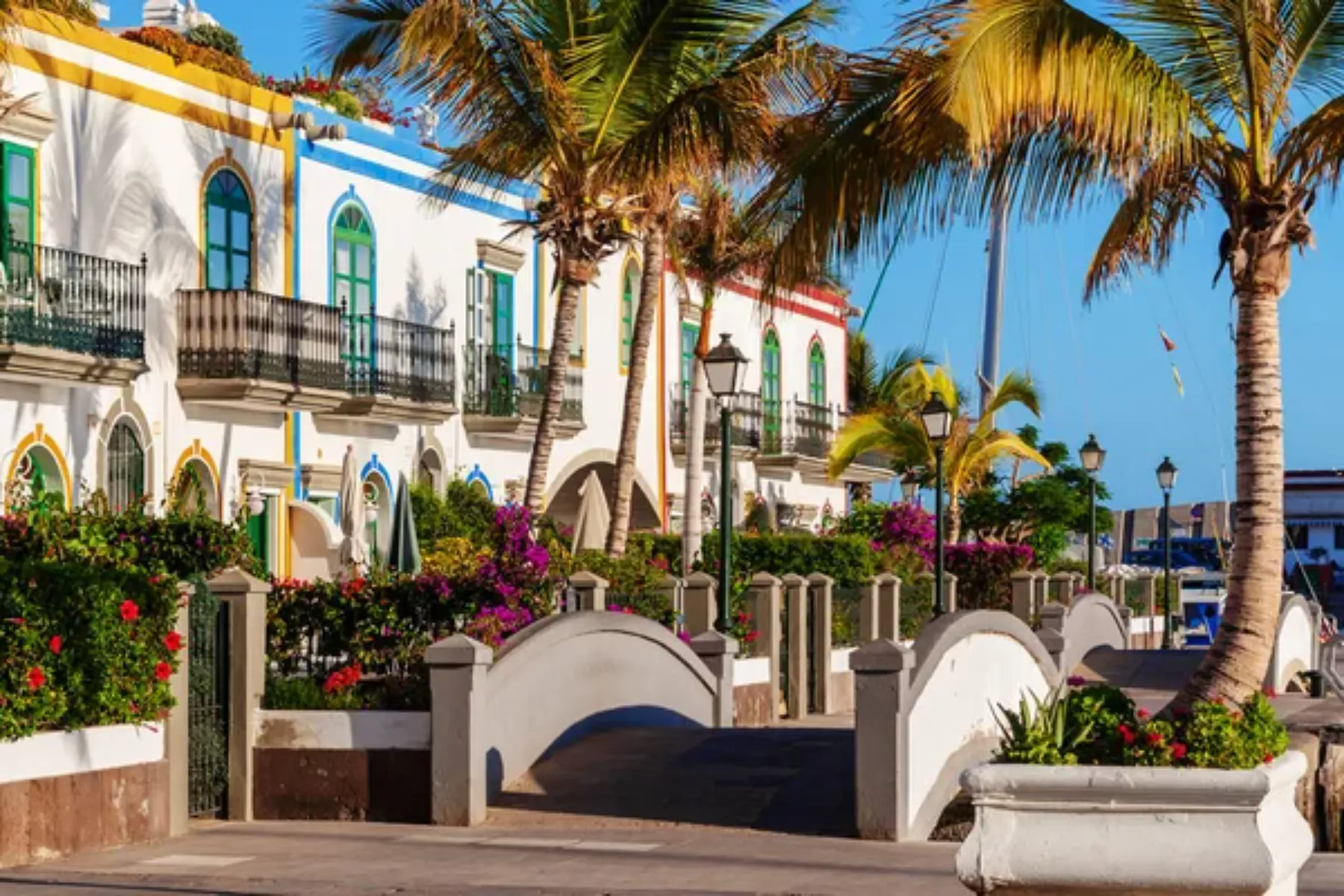
Updated On: April 22, 2024 by Ahmed Samir
Uruguay is located in South America and shares borders with Brazil and Argentina. It is the second smallest country in the continent after Suriname, its capital is Montevideo, and it is the largest city in the country, with an area of 176,215 square kilometres.
In the 18th century, the Spaniards established Montevideo as a military outpost. Over the years, Uruguay has been involved in many wars with the Spaniards and the Portuguese. In 1828, Uruguay was declared independent in the Treaty of Montevideo.
There are also many rivers, including the Rio de la Plata River, the Uruguay River, and the Black River. They are of high importance as they generate energy through dams. Many highlands and depressions not forming high mountains, and the tallest Hill is Sero Hill, with a height of 514 metres.
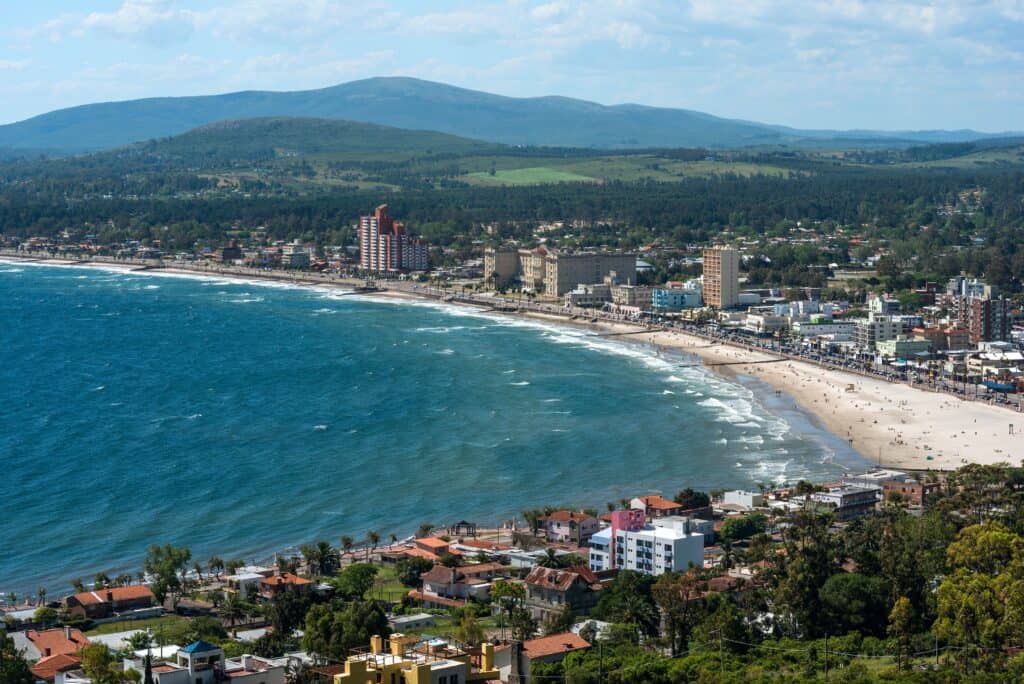
Weather in Uruguay
Uruguay has a pleasant and mild climate; the average temperature in winter is 12 degrees Celsius, while in summer, the average temperature is 26 degrees Celsius. Winter lasts from May to September, and summer lasts from October to March.
The Best Time to Visit Uruguay
Since the weather in Uruguay is moderate, it isn’t cold or hot, making it an excellent destination all year round. However, the best time to visit is during the summer, from October to March.
More Facts about Uruguay
- Uruguay has the most extended national anthem in the world, lasting up to 5 minutes.
- More than half of the Uruguayan population lives in the capital, Montevideo.
- The first World Cup took place in the country in 1930.
- Agricultural land covers an area of 78% of the country.
- The name Uruguay comes from the Uruguay River, which begins in Brazil and ends in the Rio de la Plata basin. It is the water border between Uruguay and Argentina.
- Not only is Argentina famous for its Tango, but Uruguay is also famous for its gaucho folklore.
Montevideo: The Capital City of Uruguay
As you know, Montevideo is the capital city on the eastern bank of the Rio de la Plata. When you visit the city, you will see a mixture of classic, African and European architecture. The city is full of many attractions you would want to visit; one of the most famous places is the Palacio Salvo Museum; with a height of 95 metres, it is the tallest building in South America.
Also, you can visit the oldest part of the city, which is now a famous neighbourhood called Ciudad Vieja, and the Citadel Gate. It has the only remaining portion of the walls surrounding the town. Remember to visit Independence Square and take some beautiful pictures.
One of the most famous markets is the Mercado del Porto, which is full of restaurants and serves the most renowned food and shops selling souvenirs. Another place you can visit is the National Museum of Visual Arts, which shows you the Uruguayan cultural heritage.
Attractions in Uruguay
Tourism in Uruguay has a unique character. Although it is the second smallest country in South America, it has many activities, tourist places, and beautiful cities, making it one of the best destinations.
The country also includes a group of the most beautiful landscapes and many stunning beaches on the Atlantic Ocean to enjoy the sun, sand, and surfing. There are historical and cultural landmarks and natural reserves, all of which can be discovered when visiting Uruguay.
Punta del Diablo
Punta del Diablo is a small and quiet village in which only about 1,000 people live, and about 25,000 people visit during the peak season from December to February.
Tourists come to this village for relaxation on the soft sands of the Atlantic coast, and it has become one of the most famous places in Uruguay for its beaches. It is also a fishing town and can be crossed in just an hour on foot.
Salvo Palace
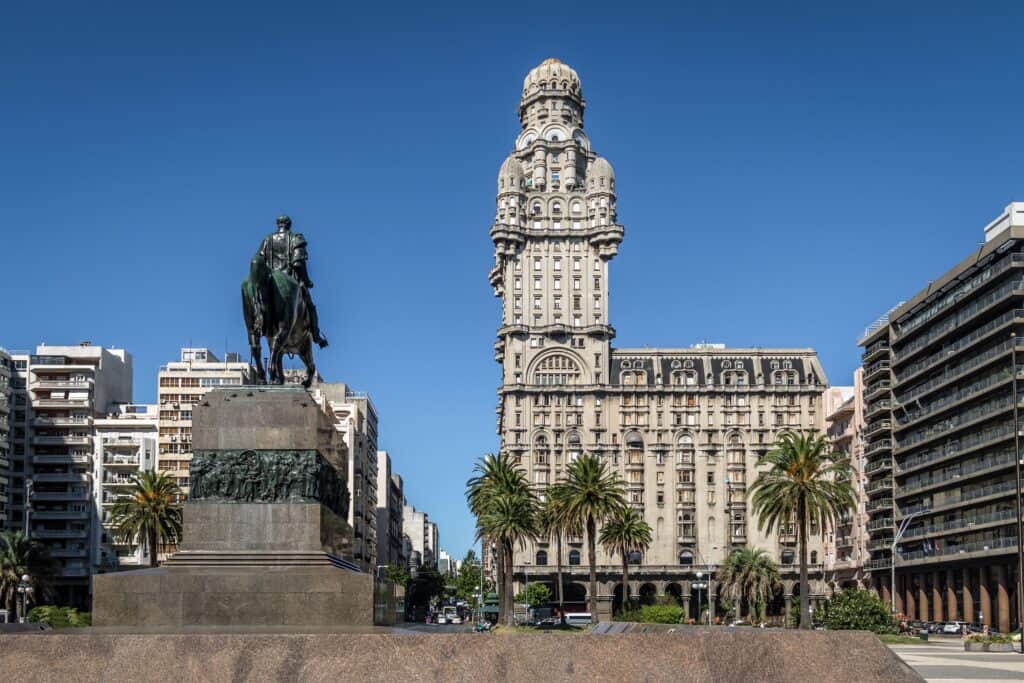
Salvo Palace is in the capital city of Uruguay, Montevideo. It was built in the 1920s and was owned by the Salvo brothers. The palace was planned to be converted into a hotel, but this has yet to happen. It became an office and presidential palace. It is the tallest building in Latin America.
The palace is across Independence Square, which is still a private property except for the Tango Museum on one of its floors. The museum is a great place to discover the culture and history of the Tango and watch beautiful performances.
Colonia del Sacramento
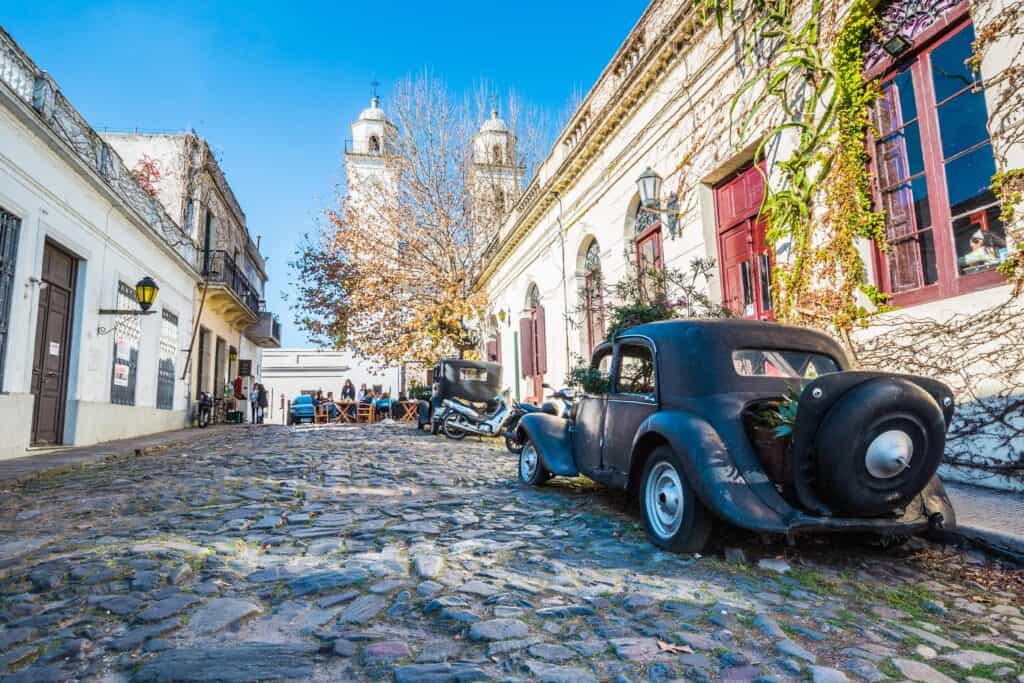
It is one of the oldest cities in Uruguay; it is also well-known as Colonia, and its old centre is a UNESCO World Heritage site. It is located an hour from Buenos Aires, the capital of Argentina, and two hours from Montevideo by car.
Colonia is a unique point to go to Buenos Aires to have a good time, as you can take a ferry that leaves about 40 times a week, and the trip takes an hour. There is a street called Calle de Los Suspiros, which is characterised by being paved with stones which gives unique vibes.
There is also the Barrio Hotel, which is set around a tree-lined plaza surrounded by cobbled streets, where several archaeological museums and a 19th-century monastery are located.
Punta del Este
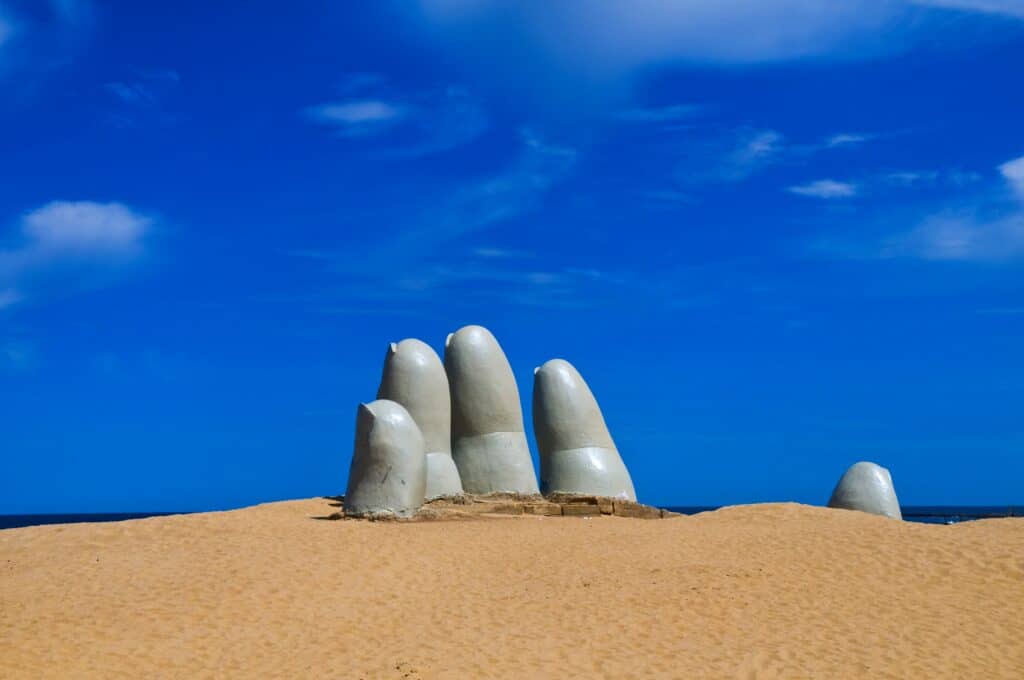
One of the most famous beaches in Uruguay is called the Monaco of the South. Many people, including actors and wealthy celebrities, visit this place and enjoy the site’s beauty. The area’s attractions are its golden sands, various activities and being home to many whales.
From the beach of Punta del Este, you can see two small islands, and on them, there is a lighthouse, the ruins of Portuguese forts, and a natural reserve.
Santa Teresa National Park
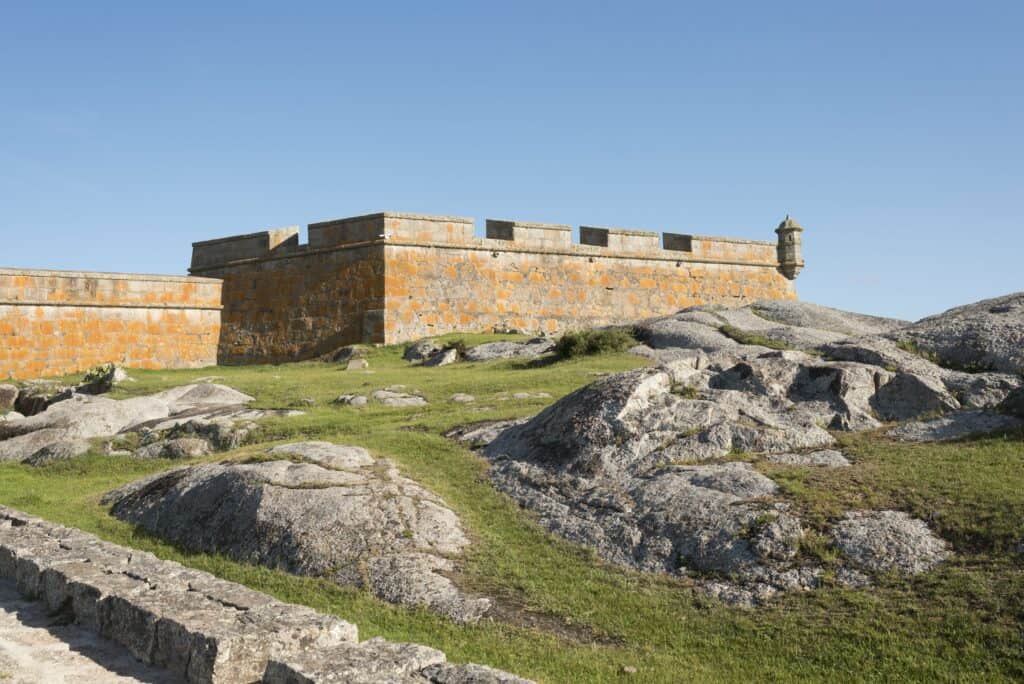
Santa Teresa National Park is located on the borders of Punta del Diablo and is one of the best places for nature lovers, including many animals, plants, and stunning landscapes. You will love the pedestrian paths in the park that cuts through the dunes and forests, and you can also see the nature of wildlife in the park.
One of the essential places in the park is the Santa Teresa Castle, which was built in 1762, and is located strategically between the park and the Atlantic Ocean.
Prado Park
It is in a neighbourhood of the same name, with beautiful trees and buildings surrounding it, and it is the largest urban park in Montevideo. Prado Park is on an area of 106 hectares and is perfect for families and friends to have a lovely picnic.
In the park, you can see walking trails, botanical gardens, and a rose garden containing flowers from France. The park also includes the Blanes Museum, which offers excellent walking paths and manicured gardens.
Salto
Salto is the second-largest city in Uruguay; it is a stop for tourists on their way to Argentina and was named after the fall. When you visit the city, you will find many excellent walking paths on the banks of the river for tourists to enjoy, and the streets merge with the beautiful architecture that makes Salto one of the most beautiful cities to visit.
Cabo Polonio
It is a place where you won’t find electricity, running water, or even Wi-Fi, with one store, often closed in the afternoon and a population of 100 people living in houses and cabins.
A lighthouse is the only building connected to the power grid. It also has the Cao Polonio National Park, which is considered an area of natural beauty on the Uruguayan Atlantic coast. There is a great diversity of environments, from sandy, rocky, coastal forests and islands.
The beach around Cabo Polonio contains one of South America’s largest colonies of sea lions. For your information, it is not easy to reach the village, there is no road to reach the town, the only way is to ride a 4WD vehicle, or hike about 7 km from the highway, and it is an excellent adventure that you should try.
Metropolitana Cathedral
Metropolitana Cathedral is across Constitution Square; it was built during the Spanish colonies in the 18th century and was announced as a National Historic Landmark. The cathedral is considered the oldest building in the city, with a beautiful design of the dome bell tower, glass windows, and copper-coloured altar.
Carnival Museum
Carnival Museum is in Montevideo, the capital of Uruguay. It is known for hosting the longest carnival celebrations in the world, lasts 40 days, and starts in the middle of January. The carnival includes African candombe drumming and dancing, cultural events, and outdoor venues.
That’s why the city includes a museum dedicated to the festival’s history, how it changed through the years, and exhibits, including masks and costumes used in the festival. The exhibition contains pictures from the 1930s and different drums used during the performances.
South American BBQ
It is one of the best dishes to try in Uruguay, it is perfect for meat lovers, and its famous dish is Asado. The Asado consists of non-marinated meat; sometimes, it contains bits of beef and is served with bread, salads, and grilled vegetables.
Many restaurants in the country serve the Asado, like La Purperia in Montevideo, and Punta Salina in Punta del Este, among the top restaurants in Uruguay.
Home of Tango
It started in the 1880s in Montevideo and was a typical dance among poor people and in the dancing classes. In 1916, Tango gave the world La Cumparsita, the Uruguayan national anthem.
When you visit Uruguay, especially Montevideo, you will see tango dancers performing on the streets. The Tango festival takes place every October in every part of the country. If you visit the country in summer, you can join street tango dancing called too milonga callejera at places such as Plaza Liber Seregni in Montevideo.
Blanes Museum
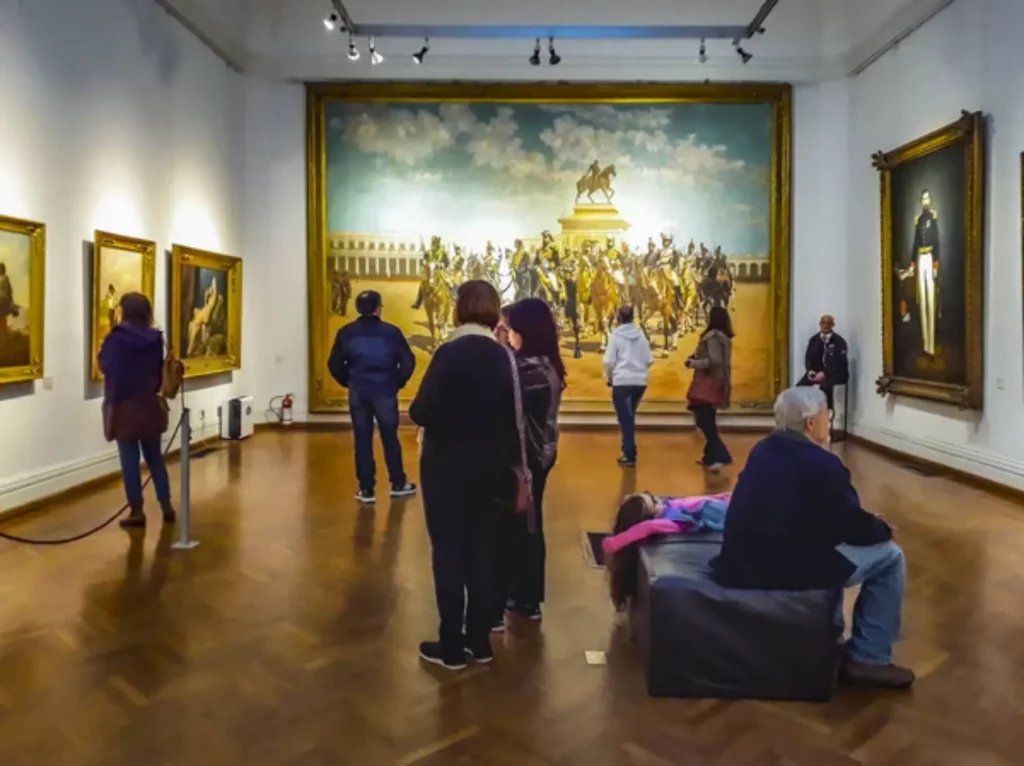
The museum was dedicated to the famous Uruguayan painter Juan Manuel Blanes, and the museum is in a mansion announced as a National Heritage Site.
For those who don’t know Blanes, he was born in 1830, and when he was 20, he was an illustrator for a local newspaper. Then he became a portraitist and painted famous political and military leaders in Uruguay and Argentina.
One of his famous works is the statue of Artigas. He is known as the father of Uruguayan independence. The statue is now in Washington, placed in front of the Museum of Visual Arts. When you are at the museum, you will see that the mansion is surrounded by gardens, trails, bridges, and quiet corners where you can sit and relax.
Fortaleza del Cerro (Fortress Hill)
The fortress Hill was built in 1809 to protect the city from attacks; it is now a museum located 134 metres above sea level, and from the top, you can enjoy a great view of Montevideo Bay.
When you reach the fortress, you can visit the lighthouse built in the 19th century and the Military Museum, which includes uniforms, photos, and guns.


